The Wildlife Conservation Network’s co-founder, Charles Knowles, looks back at
a decade of hands on work in conservation.
The Wildlife Conservation Network (WCN) is dedicated to protecting endangered
species and preserving their natural habitats. This group supports innovative strategies
for people and wildlife to co-exist and thrive. This year the group celebrates it’s ten year anniversary. The WCN Expo is October 1st and 2nd, 2011.
The following is an interview with Charles Knowles, the WCN’s Executive Director and
co-founder.
Mongabay: Please tell our readers what motivated you to start the WCN a decade
ago?
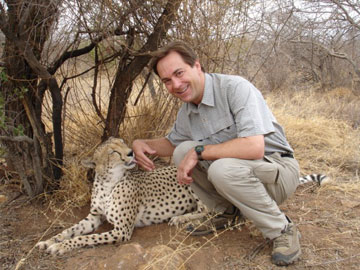 Charles Knowles with cheetah. |
Charles Knowles: When I transitioned from the high
tech world to the nonprofit world 17 years ago, I
started by helping Laurie Marker with the Cheetah
Conservation and later Rodney Jackson with the
Snow Leopard Conservancy. I was impressed
with their commitment to saving endangered wildlife
by working with local communities to develop
solutions that benefit both people and wildlife. What
became apparent to me was that there were a
number of these amazing social entrepreneurs who
were doing important conservation work, but doing
so without the support of large institutions. Like me, they were entrepreneurs who had
tremendous passion, focus, and drive, and they were completely focused on a specific
objective. Also, like me, they didn’t like working for large institutions that might have very
different ideas of how to go about their work. The challenge for these entrepreneurs was
lack of funding and support for their work.
Mongabay: How do you think conservation has changed during the last decade?
Charles Knowles: There’s no question that technological advancements have been a
tremendous boon to conservation. When I started working with Laurie, who is based in
Namibia, communication with her was done by sending a $4 fax to a hotel an hour away
that she could pick up once a week. Obviously email, Skype and the internet have
allowed instant communication anywhere. In addition, genetic analysis and satellite
tracking were virtually nonexistent. All of these technologies have come together to
make conservation much easier and more integrated.
Mongabay: Looking back, please relate both “triumphs and challenges” that have
occurred for the WCN over the past ten years.

Charles Knowles: Our conservationists have made tremendous inroads in their work. Some examples are:
* Wildlife populations, like those of Ethiopian wolves, are being stabilized in areas where
they were in deep decline.
* Conservation programs have been established where they never existed before for
species like the cheetah in Botswana and the Saiga antelope in Russia.
* Work with local communities across all of the projects is helping to build a local
conservation ethic—perhaps the most important driver of change over time.
* The base of understanding for wildlife populations and their behaviors that’s critical for
sound conservation policy is growing through important research undertaken by WCN
projects, some of it globally recognized.
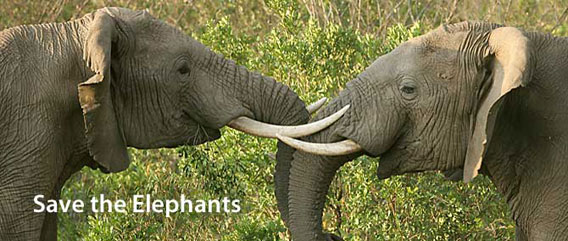
As mentioned, under funding remains a huge challenge. Also, the rise of the middle
class in Asia has led to unprecedented levels of poaching, especially of elephants and
rhino.
Wildlife conservation is a war. We win a few battles here and there, but there are ever
increasing threats to wildlife which require ever increasing effort, commitment, and
funding.
Mongabay: Please give our readers a little history of the WCN Expo, and offer
highlights of this weekend’s event.
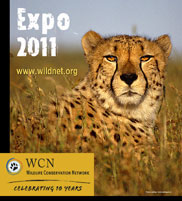 |
Charles Knowles: This will be our tenth annual Expo. We
started at Foothill College in Mountain View with a dozen
speakers and a couple hundred attendees. This year we’ll have
18 of the world’s leading conservationists speaking and over
1,000 attendees. Dr. Jane Goodall has graciously come back for
the third time to give the keynote address, and we’ll be joined by
our wonderful friend and supporter, actress Isabella Rossellini. In
addition to the speakers we also have 40 other animal
conservation and welfare groups exhibiting.
It is a wonderful network of conservationists, volunteers, and donors. Where else can
you hear first hand stories from the front lines of conservation and actually go up and
meet these people and support them, knowing that 100 percent of your gift goes directly to
their work on the ground? It’s fantastic seeing this conservation community grow. It’s
fabulous!
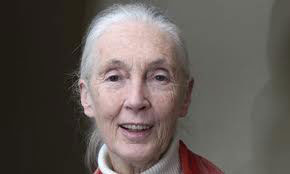 Dr. Jane Goodall. Photo courtesy of the Jane Goodall Institute. |
“Hear
Jane Speak”
Dr. Jane Goodall, DBE and UN
Messenger of Peace will
keynote this year’s WCN
Expo.
Other interviews with WCN participants
Loving the tapir: pioneering conservation for South America’s biggest animal
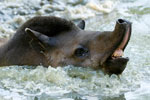
(09/11/2011) Compared to some of South America’s megafauna stand-out species—the jaguar, the anaconda, and the harpy eagle come to mind—the tapir doesn’t get a lot of love. This is a shame. For one thing, they’re the largest terrestrial animal on the South American continent: pound-for-pound they beat both the jaguar and the llama. For another they play a very significant role in their ecosystem: they disperse seeds, modify habitats, and are periodic prey to big predators. For another, modern tapirs are some of the last survivors of a megafauna family that roamed much of the northern hemisphere, including North America, and only declined during the Pleistocene extinction. Finally, for anyone fortunate enough to have witnessed the often-shy tapir in the wild, one knows there is something mystical and ancient about these admittedly strange-looking beasts.
Sowing the seeds to save the Patagonian Sea
.150.jpg)
(09/07/2011) With wild waters and shores, the Patagonia Sea is home to a great menagerie of marine animals: from penguins to elephants seals, albatrosses to squid, and sea lions to southern right whales. The sea lies at crossroads between more northern latitudes and the cold bitter water of the Southern Ocean, which surround Antarctica. However the region is also a heavy fishing ground, putting pressure on a number of species and imperiling the very ecosystem that supplies the industry. Conservation efforts, spearheaded by marine conservationist Claudio Campagna and colleagues with the Wildlife Conservation Society (WCS), are in the early stages. Campagna, who often writes about the importance of language in the fight for preservation, has pushed to rename the area to focus on its stunning wildlife.